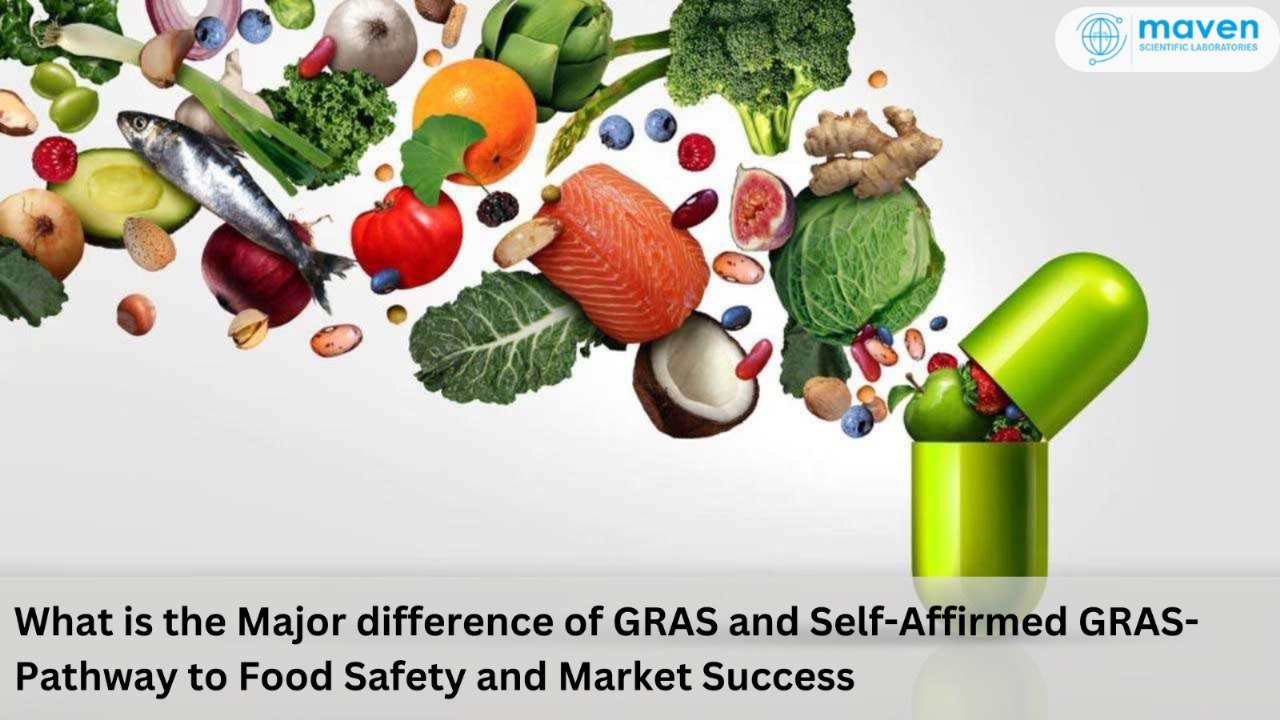
What Is The Major Difference Of GRAS And Self-Affirmed GRAS- Pathway To Food Safety And Market Success
Achieving Generally Recognized as Safe (GRAS) status is a significant milestone for any company in the food and ingredient sector. GRAS designation is a regulatory assurance that a substance is safe for its intended use in food products, helping to build consumer trust and facilitate market acceptance. In the United States, companies can pursue GRAS status via two distinct routes: FDA-Notified GRAS and Self-Affirmed GRAS. Understanding these pathways, the history of the GRAS program, and the critical role of toxicologists and regulatory consultants can help companies navigate the regulatory landscape and gain a competitive edge.
In this blog, we’ll explore the GRAS process, provide an overview of regulatory standards, and discuss how leveraging the expertise of toxicologists and regulatory consulting firms can significantly improve your chances of success.
GRAS Status:
The GRAS designation gives both consumers and regulatory authorities confidence in the safety of the ingredient, without requiring pre-market approval. This regulatory milestone is crucial for companies seeking to bring new ingredients to market.
Two Pathways to GRAS Status: Self-Affirmed vs FDA – Notified
- Self-Affirmed GRAS: In the Self-Affirmed GRAS process, a company or its appointed expert panel determines that an ingredient is safe based on scientific evidence, without the need to inform the FDA. Essentially, a company conducts an internal review and concludes that the ingredient meets the FDA’s GRAS criteria, relying on an expert panel of toxicologists, food scientists, and other specialists to affirm the safety.
Benefit:
The key benefit of this pathway is that it is faster and does not require submitting a formal notification to the FDA. However, the company must maintain thorough documentation of the safety evaluation, which must be made available to the FDA if requested. Importantly, the safety conclusion must be based on scientifically accepted data, including peer-reviewed studies and expert opinions, and must align with the FDA’s Final Rule on GRAS substances.
- The FDA-Notified GRAS process requires companies to submit a detailed notification to the FDA, requesting a GRAS determination for an ingredient. This process involves submitting a comprehensive report that includes:
- A description of the substance
- Scientific evidence supporting its safety
- Intended conditions of use
The FDA reviews the information and responds with one of three outcomes:
- No Questions Letter: The FDA agrees with the company’s GRAS determination and raises no objections.
- Additional Information Required: The FDA requests more data or clarification before granting GRAS status.
- Cessation of Evaluation: The FDA may cease its review if the safety data is deemed insufficient.
The Regulatory Standards for GRAS Status:
The process of securing GRAS status is governed by key regulatory frameworks, with the primary reference being the Federal Food, Drug, and Cosmetic Act. Specifically, 21 CFR Part 170 outlines the FDA's criteria and requirements for determining whether a substance qualifies as Generally Recognized as Safe (GRAS). This regulation sets the standards for safety assessments, expert evaluations, and documentation that companies must follow to ensure compliance with FDA guidelines.
Key Regulatory Standards:
- Safety Based on Scientific Evidence: The substance must be shown to be safe through scientific studies and expert consensus. This includes toxicological data, clinical trials, and long-term use studies.
- Expert Consensus: A panel of qualified experts, often including toxicologists, must evaluate the evidence and agree that the substance is safe for its intended use. The FDA's Final Rule (2016) emphasizes the importance of this expert panel’s review.
- Conditions of Use: The substance must be evaluated for safety under specific conditions, including its intended dose, frequency of consumption, and population groups it will affect.
- Transparency and Documentation: Whether submitting a Self-Affirmed GRAS or an FDA-Notified GRAS, the company must maintain thorough records and provide documentation supporting the safety of the substance.
Role of Maven:
Toxicologists and regulatory consulting firms play a pivotal role in guiding companies through the complex GRAS process. Here’s how they contribute:
Toxicologists:
- Safety Assessment: Toxicologists conduct in-depth safety evaluations of substances, analysing their potential effects on human health. They review toxicology studies, determine safe exposure levels, and ensure that ingredients meet FDA requirements.
- Risk Assessment: Toxicologists help companies identify any potential risks associated with the ingredient’s use, advising on dosage levels, safety margins, and potential side effects.
Regulatory Consulting Firms:
- Expert Guidance: Regulatory consultants are well-versed in FDA regulations and provide invaluable support in preparing GRAS notifications or self-affirmations. They help navigate the submission process, ensuring that all necessary data and documentation are included.
- Efficient Communication with the FDA: Consulting firms act as intermediaries, assisting in the communication between the company and the FDA, ensuring that responses to any questions or requests for additional information are timely and accurate.
- Compliance: Consultants keep companies up to date on the latest regulatory changes, ensuring that their GRAS submissions align with evolving FDA guidelines and best practices.
These experts are instrumental in helping companies achieve GRAS status while ensuring compliance with regulatory standards, ultimately facilitating a smoother, faster path to market.
Conclusion:
Achieving GRAS status is an important regulatory milestone that helps ensure the safety of food ingredients. However, to gain a real competitive advantage, companies must also prove their products are effective and meet consumer expectations. With the support of toxicologists and regulatory consulting firms, companies can efficiently navigate the complexities of the GRAS process while positioning their products for long-term market success.







